Eye issues are pretty common among dogs, but that doesn’t mean they aren’t a big deal. Some eye injuries and problems can end up compromising your dog’s vision, and even relatively minor problems are often very painful.
This means that problems with your pup’s peepers should be viewed as a medical emergency, which will necessitate a trip to the vet. In fact, you’ll want to get your vet on the phone just about anytime your dog suffers from an eye issue.
But there are a few things you can do to help minimize your dog’s discomfort and give him the best chance at a rapid recovery, and that includes keeping some dog-safe eye drops on hand.
Below, we’ll talk about some of the best over-the-counter eye drops for dogs, outline some of the most common and noteworthy eye issues dogs experience, and share some general tips for protecting your pooch’s eyes below.
Just need a quick recommendation? Remend Lubricating Eye Drops are designed specifically for pets and work well as a dog-safe eye rinse.
Key Takeaways: Best Dog-Safe Eye Drops
- Most canine eye issues will require veterinary assistance. Not only do owners frequently struggle to identify the type of eye problem they’re faced with, but eye problems often cause intense pain for your pet.
- There are some dog-safe eye drops available that you’ll want to have in your canine first-aid kit. Most eye drops that’ll effectively treat things like eye infections (and the associated pain) require a prescription, but there are some over-the-counter dog eye drops available that can help in a first-aid context.
- Like most other health problems, prevention and early detection are key with eye issues. We’ll explain a few of the best ways to protect your dog’s eyes to prevent injuries and list some of the key symptoms (such as abnormal discharges and eyes that appear “hazy”) you’ll want to watch for.
Eye Problems in Dogs Are Serious
We’ve already explained that eye issues are serious and that they’ll generally require veterinary attention.
But this is the kind of thing that bears repeating, as many dogs end up suffering needlessly because their owners don’t recognize the seriousness of the issue.
So, just be sure that you don’t shrug off eye issues.
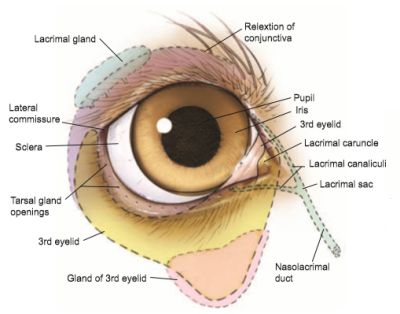
There are a variety of reasons that eye issues are serious, but three of the most noteworthy include:
- Eye issues – including infections, injuries, and other problems – are often excruciatingly painful for dogs. Your dog may not even display any outward signs that he’s in pain, but you’ll definitely want to do whatever is necessary to help alleviate his discomfort.
- Eye injuries and infections may progress very rapidly. Sometimes, these issues can go from “minor” to “life-altering” in as little as 12 hours. Sure, dogs can survive after losing an eye or going blind, but do you really want that for your buddy?
- Eye discharges and related problems can lead to secondary infections. This will not only make your dog even more miserable, but it’ll often necessitate more elaborate veterinary care too. This will not only be tough on your pooch, but it’ll also mean the associated bills will grow dramatically.
Bottom line: If your dog appears to be in pain or he’s suffered any type of significant eye injury, you’ll want to hop in the car and get to the vet pronto.
On the other hand, if the issue is minor and your dog is acting like his normal, goofball self, you can likely wait until the morning to seek veterinary care.
The Best Dog-Safe Eye Drops and Eye Washes
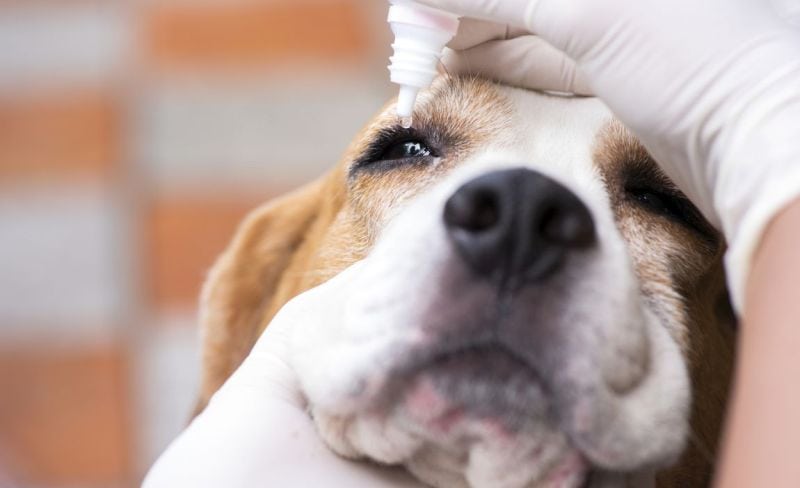
While you’ll need to speak to your vet about your dog’s eye problem, there are a few doggie eye-care products that make sense to keep around.
Some can help address the issue entirely (if, for example, your pup’s eyes are simply dry or he gets a bit of dirt in them), while others may help prevent a minor problem from getting worse.
While eye washes and saline solutions are OK to use, K9 of Mine’s consulting veterinarian recommends that you refrain from applying medicated eye drops to your pet’s eyes, unless your vet explicitly instructs you to do so.
Dogs with some types of eye wounds, such as scratched corneas, may suffer from serious consequences if treated with certain eye drops (such as those containing steroids or anti-inflammatories), causing them to heal slower and potentially even perforate.
1. Remend Lubricating Eye Drops
About: Remend Lubricating Eye Drops are some of the only eye drops on the market that are designed specifically for pets, and they’re also effective and available without a prescription. Designed to lubricate and hydrate dry eyes, these drops can help dogs (and cats) suffering from chronic or temporary eye dryness.
This is a sponsored placement, in which an advertiser pays a fee to be featured in this article. Learn more
Features:
- Made with cross-linked hyaluronic acid
- Packaging designed to make application easy
- Specifically designed for dogs and cats (not for use in humans)
Pros
- Over-the-counter solution to your dog’s dry eyes
- Easy to use
- Shouldn’t sting or cause your pet pain
Cons
- Very few user reviews (though most that exist are positive)
- Slightly more expensive than some similar drops designed for human use
2. Miracle Care Sterile Eye Wash
About: Miracle Care Sterile Eye Wash is a good option for owners who need to simply rinse out their pet’s eyes (or the surrounding area). This product isn’t designed to treat eye infections or injuries, but it makes a great addition to your pet first aid kit, and it is designed to soothe your pup’s peepers while washing away debris.
This is a sponsored placement, in which an advertiser pays a fee to be featured in this article. Learn more
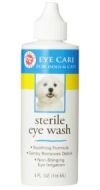
Miracle Care Sterile Eye Wash
A non-stinging eye wash that make a perfect addition to your canine first-aid kit.
Features:
- Non-stinging eye irrigation formula
- Safe for dogs, as well as cats, birds, and horses
- Made in the USA
Pros
- Sterile liquid that makes a safe and effective eye wash
- Helpful for eliminating typical “eye gunk”
- Bottle’s design allows for easy application
- Several owners mentioned using the product for multiple years
Cons
- Though initially sterile, it is no longer sterile once you open the bottle
- Pricey for a “one-and-done” product (because it’ll no longer be sterile, once opened)
3. Viscotears
About: Viscotears is a great product for treating dogs with dry eyes. It is actually designed for human use, but it is safe to use on your doggo’s eyes too. Note that this product won’t treat eye infections, nor is it appropriate for use in dogs with injured eyes. However, it is a good option for treating run-of-the-mill dry eye problems.
This is a sponsored placement, in which an advertiser pays a fee to be featured in this article. Learn more
Viscotears
These lubricating eye drops are designed for humans, but they’ll work for your dog too.
Note that there aren’t a ton of user reviews for Viscotears – a fact which generally causes us to avoid recommending a product. However, our consulting veterinarian is a fan of the product and recommends it to owners in the course of her clinical work.
Accordingly, we feel 100% comfortable recommending it here.
Features:
- Comes in two forms: Large, bulk tubes and individual, single-dose units
- Available without a prescription
- Helps soothe and lubricate dry eyes
Pros
- Safe, effective treatment for dogs with dry eyes
- Doesn’t cause pain and helps soothe the discomfort caused by dry eyes
- Bulk tubes are relatively affordable (single-dose units are a bit more expensive)
- Doesn’t require a prescription
Cons
- Not explicitly designed for dogs (though it is safe for canine use)
- A few people reported that the drops are very large, making it slightly messy
- Some users found that the single-dose packaging made it difficult to apply
- Gel-like consistency can make it hard to disperse into the eye
4. Refresh Optive Lubricant Eye Drops
About: Refresh Optive Lubricant Eye Drops are another option for doggos with dry eyes. Like Viscotears, Refresh Optive Drops are actually designed for human use, but they’re safe for your pooch too. In addition to hydrating your hound’s eyes, these drops help soothe and prevent the damage long-term, on-going dryness can cause.
This is a sponsored placement, in which an advertiser pays a fee to be featured in this article. Learn more
Features:
- Packaged in single-use vials
- Two simple active ingredients: carboxymethylcellulose sodium and glycerin
- Preservative free
- Available without a prescription
Pros
- The product has received thousands of positive reviews
- Single-dose packaging is convenient
- Very affordable, making them ideal for treating on-going eye dryness
Cons
- Safe for dogs, but designed for human use
Tear stains are a common eye problem – especially among many white dog breeds.
However, unlike many of the other ailments and injuries we’re discussing here, tear stains aren’t dangerous, nor will they cause your dog any distress. They simply look kinda grody. And fortunately, you can usually treat this on your own (though you should talk about them with your vet during your pet’s next appointment).
We’ve talked about the entire tear-stain issue at length before, so we’ll cut to the chase here: You want to pick up Burt’s Bees Tear Stain Remover. It’s the only dog-safe, non-toxic, and effective tear-stain treatment we’ve found on the market.
Four-Footer First Aid: What You Should Do If Your Dog Has an Eye Problem
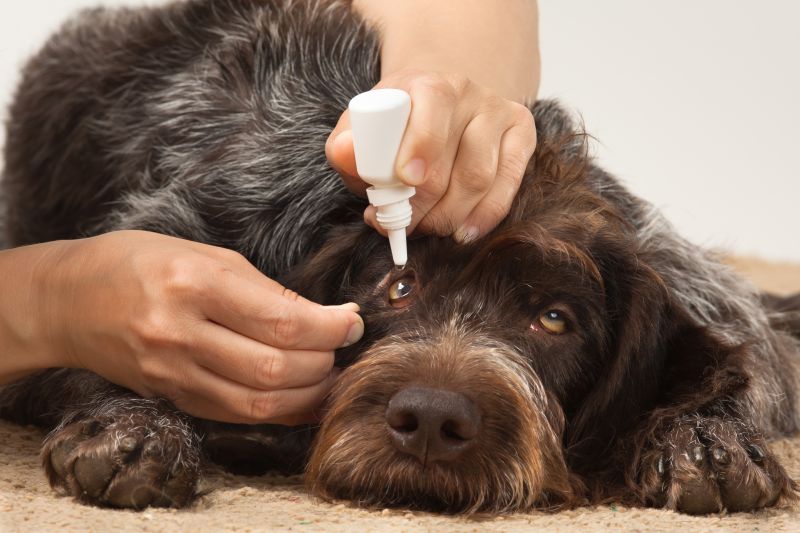
Dogs can suffer from a variety of different eye problems, so proper first aid will vary from one case to the next. We’ll walk you through a couple of different scenarios and explain the best course of action below.
Your Dog Suffers a Traumatic Eye Injury
If your dog suffers a major eye trauma, you’ll want to cover it with a soft bandage and head to the vet or emergency vet clinic immediately.
This would include things like the eye being punctured by a stick, blunt trauma to the eye region, or large amounts of debris getting into the eye. If anything is sticking out of your dog’s eye, you’ll want to try to cover it with a paper cup or something similar, to prevent further injury.
Your Dog’s Eyes Are Bleeding
If you see bleeding into the eye, head over to the vet at once. This includes bleeding in the sclera — the white portion of the eye — or bleeding in the actual eyeball (in which case, you’d likely see the blood in or around the pupil).
Your Dog’s Eyes Appear Blueish
If the cornea of your dog’s eye has a blueish tint, you’ll want to seek immediate veterinary assistance. This can indicate corneal edema, which means that severe inflammation is occurring.
Note that a blue-tinted pupil is generally not a medical emergency; it typically indicates nuclear sclerosis or cataracts. Dog cataracts will require veterinary care, but not “drop-everything-and-head-to-the-vet” level care.
Your Dog Experiences a Minor Eye Trauma (Debris in the Eye)
If your dog suffers a minor eye trauma, such as getting some dirt or debris in her eye, you can wash it out with distilled water, and then head to the vet. If you do not have distilled water on hand, bottled water or sterile saline will also work in an emergency.
You probably don’t need to drive to the pet ER in the middle of the night, but you’ll want to obtain veterinary care first thing in the morning.
Your Dog Has an Eye Infection
If your dog appears to have an eye infection or some type of discharge, you’ll want to gently rinse the eye and the surrounding area and seek veterinary assistance within about 12 hours (you needn’t head to the vet in the middle of the night unless your dog appears to be in serious pain).
Use sterile saline, distilled water, bottled water, or boiled-and-cooled tap water to rinse out the eye, and then gently wipe the area clean with some a sterile bandage.
Your Dog’s Eyes Appear Irritated or Red
If your dog’s eyes just seem slightly irritated or dry, you can use some lubricating, dog-safe eye drops. However, you’ll still want to contact your vet and solicit his or her advice. Your vet will likely recommend coming in for an exam, but you probably won’t have to drop everything and jump in the car.
Just remember that any type of eye issue necessitates a call to your vet. As mentioned earlier, eye problems can be very painful, and they can go from “no big deal” to “VERY big deal” in a matter of hours.
Additional Dog Eye-Care Supplies

In addition to the eye drops and eye washes discussed above, it’s a good idea to keep some basic eye-care supplies in your dog first aid kit or medicine cabinet at all times.
Sterile Saline
It’s always a good idea to have some sterile saline on hand. This is the best liquid available for flushing debris from your dog’s eyes, such as may occur when he’s romping around on the beach or riding in the car with the window down (incidentally, this really isn’t a good idea, but we’re all guilty of letting Rover feel the wind in his cheek flaps from time to time).
Just note that sterile saline ceases being sterile once you open it and use it, so it’s a one-time use thing. Still, even though that may seem a little wasteful, sterile saline remains the very best liquid for flushing your dog’s eyes. Nevertheless, in a pinch, you can use distilled water or boiled-and-cooled tap water.
Of course, if you’re on a camping trip or some other far-off location and faced with a dog who has sand in his eyes, you will have to use whatever water source you have. But this will increase the chances that he’ll develop an infection.
Gauze and Bandages
You’ll want to have some soft gauze bandages on hand if your dog ever suffers a problem more serious than some dirt in his eyes. This way, you’ll be able to protect the wounded area while you get him to a vet. You’ll also need a roll of gauze, which will help keep the bandage in place.
Hopefully, you already have these items in your canine first-aid kit, but if not, go ahead and buy some and stick it in your medicine cabinet.
Common Eye Problems in Dogs
Before you begin trying to soothe your dog’s eyes, you need to familiarize yourself with some of the most common eye problems from which dogs suffer. Below we’ll discuss a few of the most noteworthy issues (just note that this list is not exhaustive):
- Injuries or Corneal Ulcers– A nearly endless list of things can result in eye injuries or corneal damage. Your pooch could end up getting jabbed in the eye by a stick while running through a forest, another dog or cat could scratch him in the eye, or you may accidentally poke his eye during playtime. The relative damage caused will vary from one incidence to the next, but just about any type of eye injury warrants veterinary attention.
- Debris in the Eye – Dirt, sand, grit, and a litany of other things can get into your dog’s eyes — especially under the third eyelid — and cause irritation. But no matter what kind of stuff is in your dog’s eye, you’ll want to flush them with liberal quantities of sterile saline, distilled water, or boiled-and-cooled tap water (in that order of preference). In most cases, it will be wise to have your vet check your dog’s eyes afterward, to ensure that his cornea hasn’t become scratched.
- Epiphora – Epiphora is a condition in which your dog’s eyes produce more tears than normal. Note that epiphora is actually a symptom of a problem, rather than a specific disease. Several different issues, including eyelid deformities and blocked ducts, can lead to the condition. Though this isn’t a medical emergency, you’ll want to make an appointment with your vet to obtain a diagnosis and begin the appropriate treatment.
- Conjunctivitis – Conjunctivitis refers to the inflammation of your dog’s inner eye. Like epiphora, conjunctivitis can spring from several different root causes, but it most commonly occurs in response to a bacterial infection. Conjunctivitis isn’t a medical emergency, but it can be painful and requires treatment, so you’ll want to see your vet and get to the bottom of the problem.
- Dry or Irritated Eyes – Simple dry or irritated eyes are often caused by things like allergies, windy environments, dry indoor conditions, high dust levels, or potentially after swimming in chlorinated pool water. You can use any of the lubricating eye drops discussed above to provide some temporary relief, but you’ll want to have your vet check out your doggo and ensure that the problem isn’t more serious.
- Keratoconjunctivitis Sicca (KCS) — Unfortunately, this condition is also called “dry eye,” but it refers to a specific condition, as opposed to relatively healthy eyes, which just seem to get dry from time to time. It most commonly occurs when a dog’s immune system destroys the tear glands, but it also occurs when the nerves connecting to the tear glands become damaged. Treatment requires replacement tears and (usually) immune-suppressing eye drops.
- Cataracts – Cataracts are opaque sections that can develop on the lens of your dog’s eye. This will obscure your dog’s vision and potentially lead to cataracts and even complete blindness over time. Genetics, diabetes, and exposure to UV rays are all relatively common causes of cataracts, but there are a few other potential causes as well. Fortunately, cataracts themselves don’t cause much pain (though they’ll obviously reduce your dog’s quality of life and may lead to blindness), but they’ll generally require surgical treatment and on-going eye care, which will likely last the rest of your dog’s life.
- Glaucoma – Glaucoma refers to a condition in which the pressure inside your dog’s eyes rises – sometimes dramatically so. The condition is common among some breeds, but it can afflict any dog. Glaucoma not only causes pain, but it may also compromise the integrity of your dog’s eye and lead to blindness. Accordingly, it is important to seek immediate veterinary care. Treatment may consist of medications, surgical intervention, or both.
- Cherry Eye – Cherry eye is a relatively disturbing condition to see, as it occurs when your dog’s third eyelid prolapses. The condition often follows inflammation of the nictitans gland, and it can cause some mild to moderate irritation for your pooch. Most cases of cherry eye can be corrected surgically, but if left untreated, it can lead to more serious problems.
- Entropion – Entropion is a condition in which your dog’s eyelid rolls inward. This leads to pain and discomfort, and – in some cases – it can lead to corneal damage. Dogs suffering from entropion may squint frequently, hold their eyes shut, or suffer from conjunctivitis. The condition is common in a number of breeds, and in almost all cases, it’ll require surgical treatment. Ectopic cilia is a similar, yet different condition that may also cause dogs eye problems. In this case, the eyelid is anatomically normal, but the eyelashes grow improperly, leading to eye irritation.
Dog Breeds That Are Predisposed to Eye Problems

Unfortunately, like many other health conditions, eye problems tend to be common in some breeds — particularly those with protruding eyes, hairy faces, or drooping eyelids. Obviously, things like eye injuries can happen to any four-footer, but owners with one of the following breeds must be especially observant of their dog’s eyes and watch out for the first signs of trouble.
- Beagles
- Bloodhounds
- Boston terriers
- Bull terriers
- Bulldogs
- Collies (most types)
- English springer spaniels
- German shepherds
- Great Danes
- Huskies
- Lhasa apsos
- Malteses
- Pekingese
- Poodles
- Pugs
- Saint Bernards
- Shar-peis
- Shih tzus
Preventing Eye Wounds: Canine Goggles to the Rescue!

As we mentioned at the outset, the best way to treat eye injuries is to prevent them from happening in the first place.
Many eye injuries can be avoided by simply employing some common sense. Don’t let your dog ride in the car with his head hanging out the window, don’t let your dog get too close to unfamiliar cats who may scratch him, and use caution when allowing your dog to run through forests and similar places where hazards abound.
It’s also a good idea to hook your dog up with some protective goggles.
Dog goggles (or glasses) not only help provide protection from things like sticks, dirt, and debris, but they can also protect your dog from splashing water and other irritating (if not exactly dangerous) things. Many of the best dog goggles even provide UV protection, which may help prevent cataracts from forming.
***
Hopefully, you now understand that eye issues are no small matter and that you’ll want to do everything you can to protect your pooch’s peepers and address any wounds, infections, or other problems promptly. But while you’ll likely need your vet’s help to deal with any significant issues, it is still a good idea to keep some dog-safe eye drops at the ready.
Has your doggo ever suffered from an eye problem? How did you treat it? Did your vet prescribe anything that was particularly effective? We’d love to hear about your experiences in the comments below!
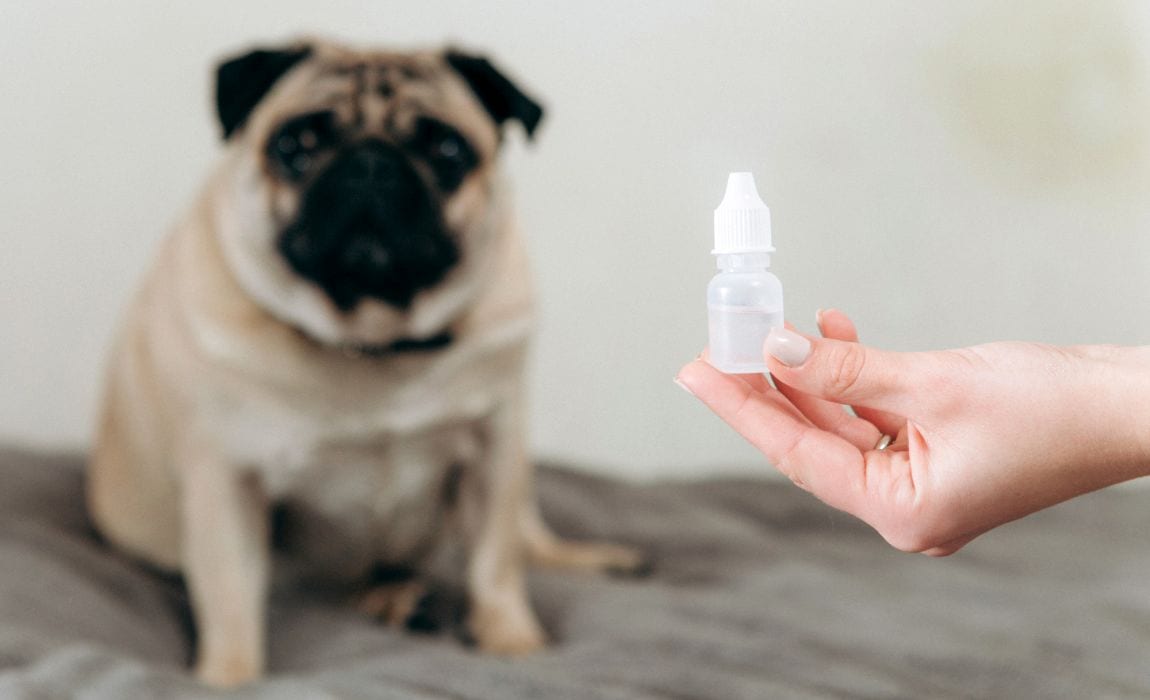



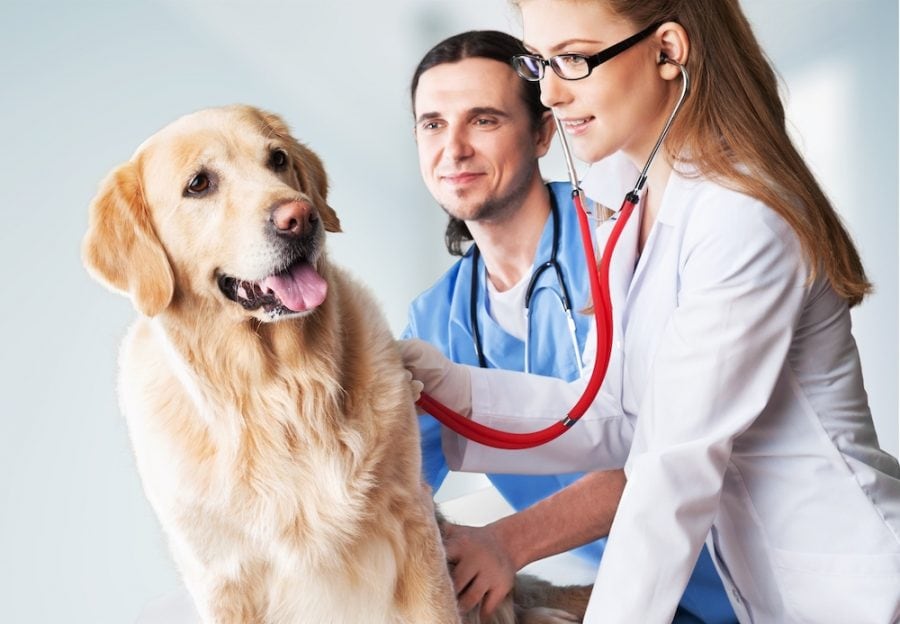





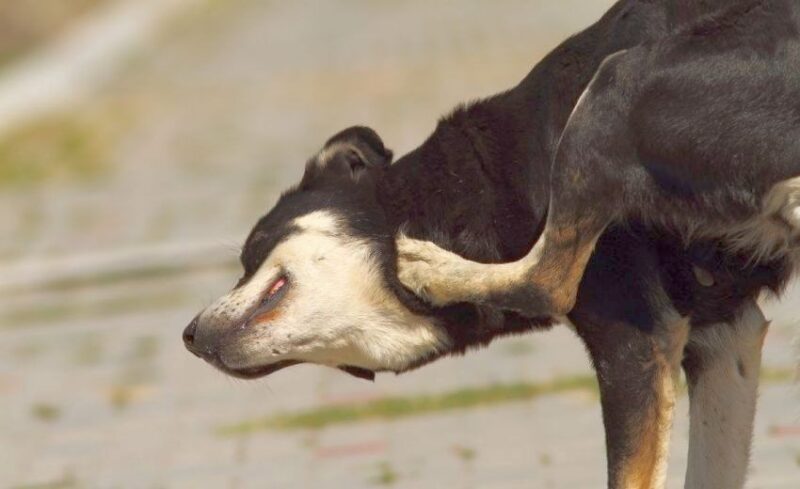

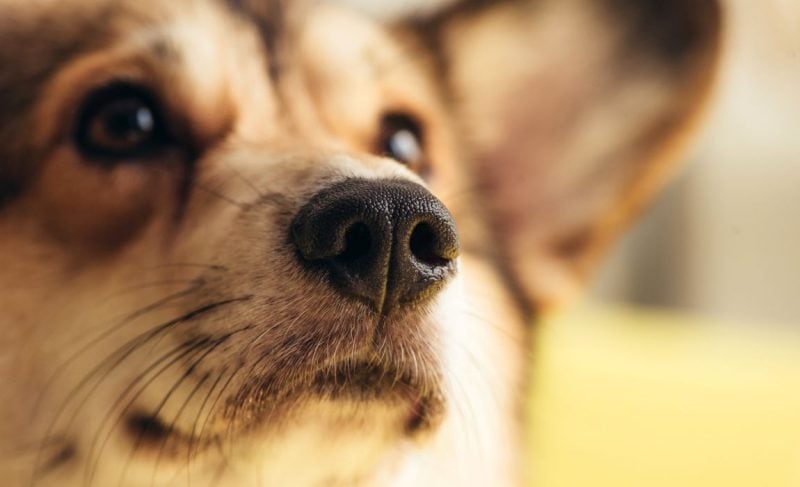
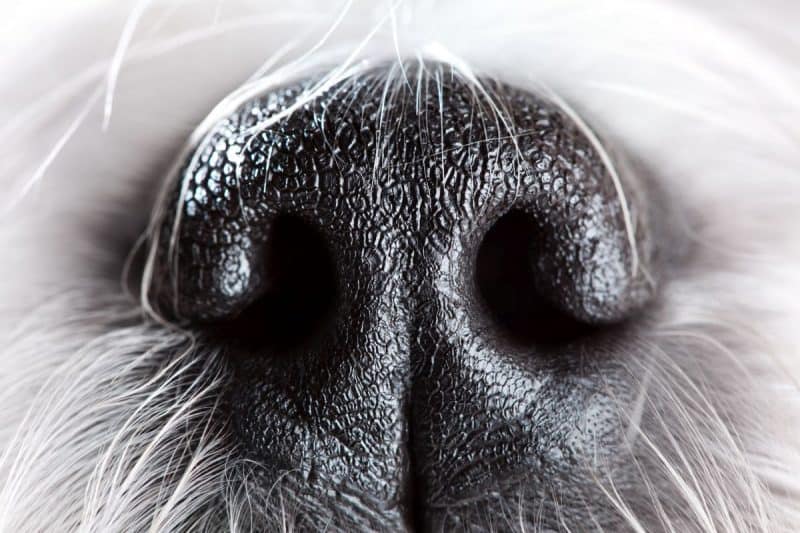

Leave a Comment